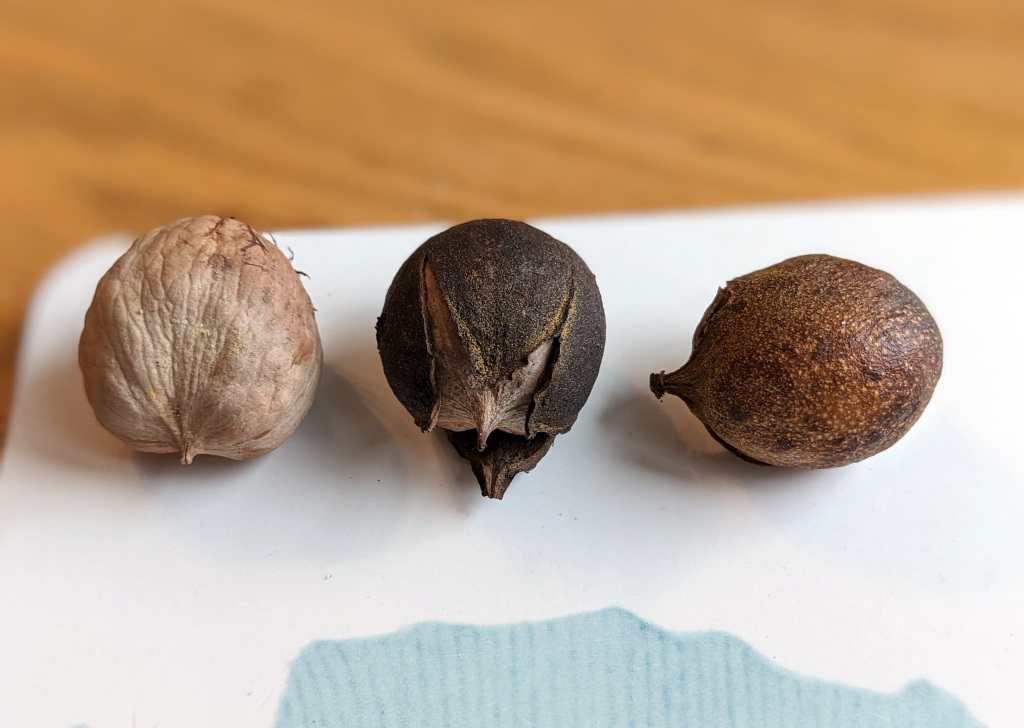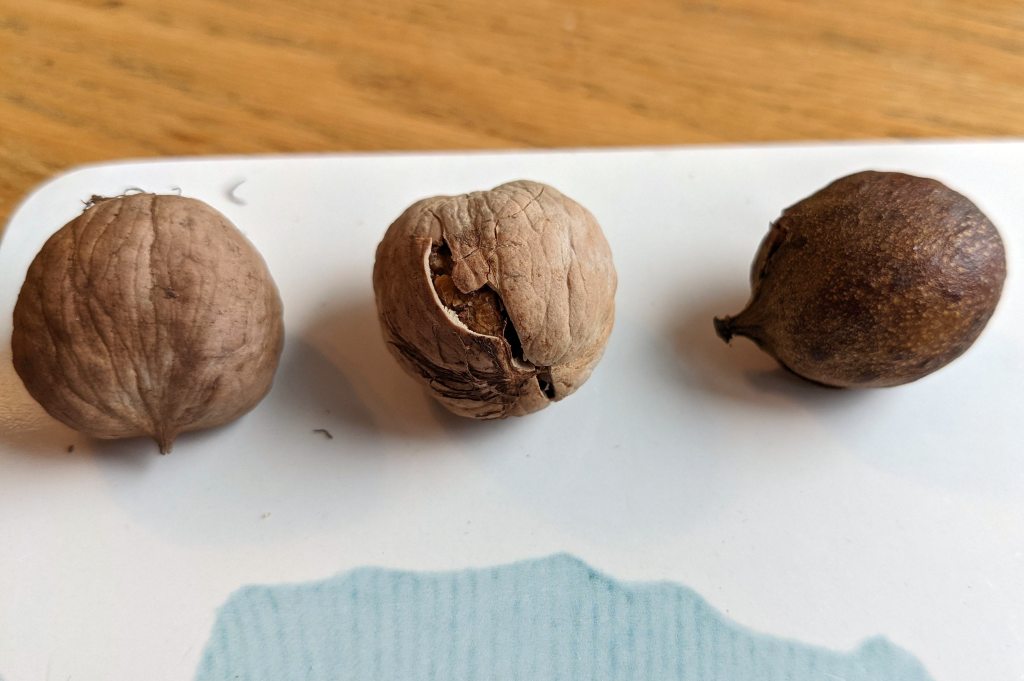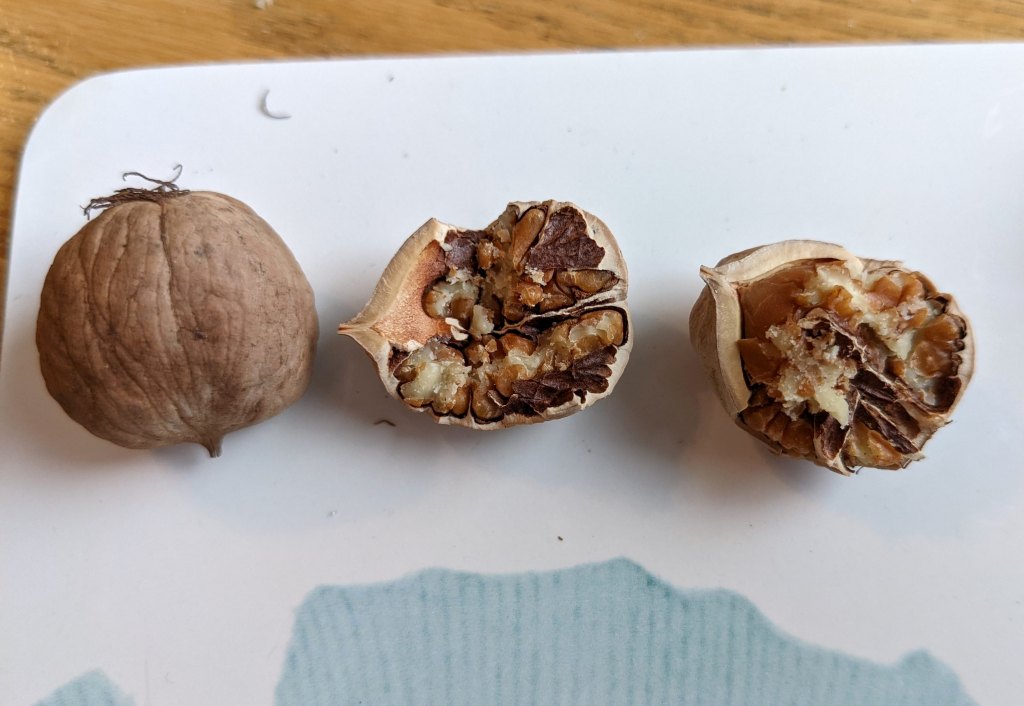
18 November 2021
In case you don’t think tree names are descriptive consider the bitternut hickory (Carya cordiformis). Closely related to pecans (Carya illinoinensis) the nuts are so unpleasant that even squirrels avoid them. That explains why I found so many on the ground at Yellow Creek State Park on 6 November.
I didn’t know what they were so I brought several home to identify them. The thin husk that splits just halfway up the hard shell is diagnostic for bitternut hickory. I cracked one open.

It resembles a pecan, as it should since it’s a “pecan hickory.”

Is the nut bitter? I usually don’t sample wild food but why not? I tasted a tiny bit.
Yow! Bitter! Astringent. I washed out my mouth several times before the taste went away. No wonder squirrels avoid these. Wikipedia says rabbits eat them, though.

Obviously the nuts are not valuable to humans but the wood is hard and durable, used for furniture, paneling, tool handles, ladders and for smoking meat — as in hickory-smoked bacon.
The smoke may be nice but not the bitter nuts.
Further reading: Here’s how to identify the bitternut hickory in winter.
(photos by Kate St. John)
There is also shag-bark hickory. They are pretty common in western-PA. I wonder if they are bitter too? Care to experiment?
No thanks!
Ever hear of pig nuts? As a kid, a friend and I picked up a bunch of hickory nuts. Her grandmother told us to throw away those pig nuts and that pig nuts weren’t fit to eat.
Nan, Yes I’ve heard of pignuts from the pignut hickory tree but have never collected them.